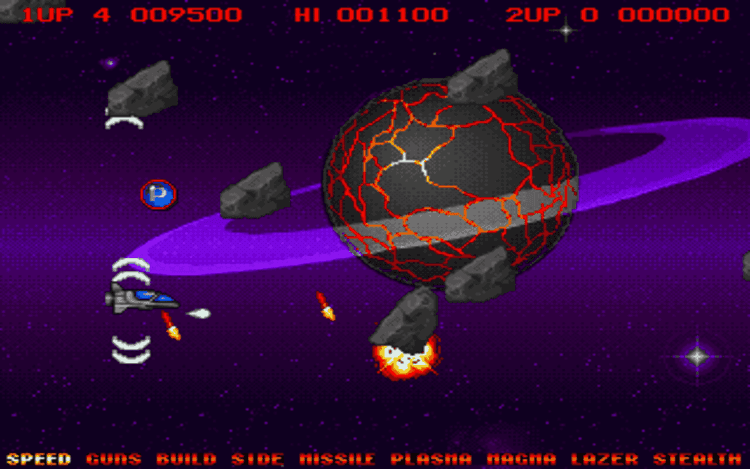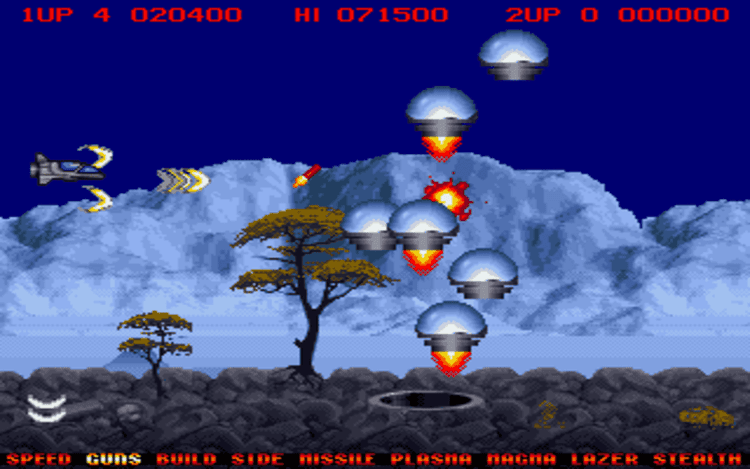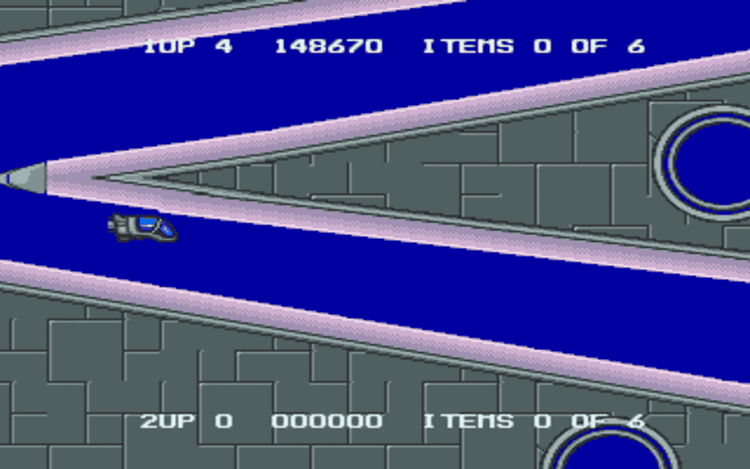
Project-X is a side-scrolling shooter game from Team17 that drops players into a relentless war against biomechanical invaders. Fast-paced action, stunning pixel art, and a thunderous soundtrack evoke the thrill of arcades while offering the depth of home-computing classics. Like R-Type and Gradius, it challenges reflexes and strategy, demanding quick weapon swaps and clever power-up usage. Seamless controls and fluid scrolling make each stage a showcase of early-90s technical ingenuity, yet its timeless design ensures modern audiences can still enjoy the razor-sharp play experience online or on any compatible platform, and every session feels epic.
Project-X burst onto DOS systems in the early 1990s as undeniable proof that home computers could rival arcades for sensory spectacle. Developed by Team17, a studio already respected for turning commodity hardware into audio-visual wonderlands, the game mesmerised players with multi-scroll parallax backdrops, vivid sprite work, and screen-filling particle effects that seemed impossible on a humble desktop. Every level feels like a living illustration: alien clouds drift across volcanic horizons, biomechanical satellites pulse with eerie neon glows, and debris from fallen foes streaks past the cockpit as though torn straight from a science-fiction comic. Complementing the visual fireworks is a soundtrack of driving techno grooves intertwined with soaring synth melodies that react dynamically to the on-screen chaos. Far from masking shallow design, this technological flourish serves an intricate gameplay core, proving that polish and depth are not mutually exclusive. Team17’s attention to timing, enemy placement, and weapon feedback gives Project-X a tactile immediacy that still feels fresh, ensuring newcomers can dive in without prior nostalgia while veterans relish its razor-sharp feedback loop.
In the modern era of instant access, the classic shooter has shed the shackles of floppy disks and installation utilities. Play Project-X online and the entire galactic campaign streams directly into a browser tab, free of charge and devoid of regional barriers. Thanks to careful preservation of the original code, enemy formations retain their authentic aggression, missiles arc with familiar precision, and the unforgettable soundtrack plays exactly as programmed—yet the experience adapts gracefully to touch controls on mobile devices or traditional keyboards on desktop screens. There are no external plugins to wrangle, no compatibility patches to hunt down; within seconds you find yourself weaving through bullet storms and unleashing charged plasma blasts as though the decades between dissolved. This seamless availability grants a new generation the chance to appreciate the artistry of sprite-based shooters, while veterans can reignite muscle memory during a coffee break, proving that good game design transcends hardware generations.
Beneath the kaleidoscopic visuals lies a combat system that rewards strategic foresight as much as lightning reflexes. Borrowing the best concepts from genre pioneers such as Gradius and R-Type, Project-X employs a power-up bar that scrolls through upgrades earned by collecting capsules. The pilot must choose precisely when to activate speed boosts, homing missiles, long-range lasers, or the devastating plasma cannon, because purchasing one option resets the bar and delays access to others. This economy of destruction forces constant evaluation: do you crank velocity to out-maneuver the next wave, or bank tokens for a shield that could save your last life during the boss gauntlet? The result is an elegant tension between immediate survival and long-term strength, elevating every pick-up to a miniature tactical dilemma. Difficulty is unapologetically high, but the learning curve is fair; enemy telegraphs are readable, collision boxes are generous, and patterns remain consistent run after run, inviting players to transform frustration into mastery. Add branching warp routes, secret score bonuses, and adaptive enemy spawns based on performance, and you have a title whose replay value matches its explosive first impression.
Project-X did more than entertain; it inspired. Code snippets circulated in demo-scene circles as programmers dissected its parallax routine, while musicians sampled its energetic soundtrack to headline mod compilations. Magazines of the era hailed it as a showcase of what disciplined assembly language could achieve, and its success bolstered confidence in independent European studios at a time when Japanese coin-ops dominated the shooter landscape. The title’s punishing yet fair design later influenced speedrunning culture, with players racing not only for completion but for high-score efficiency—optimising enemy clears and risk-laden weapon swaps to shave precious seconds. Fan modifications introduced new ships, rearranged stages, and even added difficulty modes, demonstrating a community’s enduring affection. Crucially, Project-X proved that a game could be both technically advanced and artistically cohesive, setting a template for future Team17 hits and leaving fingerprints on countless indie shooters that still honour its philosophy of beauty married to tight mechanics.
Across decades of technological upheaval, Project-X endures because it captures pure interactive exhilaration: the thrill of threading a ship through impossible odds, the glory of timing a maximum-power laser to obliterate a screen-wide dreadnought, and the satisfaction of turning each defeat into insight for the next run. The default control scheme remains blissfully simple. Directional keys—or an analogue stick—guide the starfighter with pixel-perfect precision, a primary fire button unleashes standard shots, and a secondary key activates whichever upgrade the power-up bar currently highlights. This intuitive layout makes the game instantly approachable on any input device, while its depth emerges as players discover subtleties such as shot-cancelling to manipulate enemy spawns or micro-adjusting speed during boss phases. Its balance of audio-visual drama and mechanical clarity invites academic study and casual enjoyment alike, demonstrating how timeless design emerges when every pixel, note, and frame of animation exists in harmony with the rules that govern them. Whether you are revisiting childhood memories or meeting this cosmic challenge for the first time, Project-X proves that great games are not locked to any era—they live wherever imagination, skill, and the simple urge to play converge.
All source codes for Project-X are publicly available, and the game remains the property of its original authors at Team17.
Share game
Share game








Share game